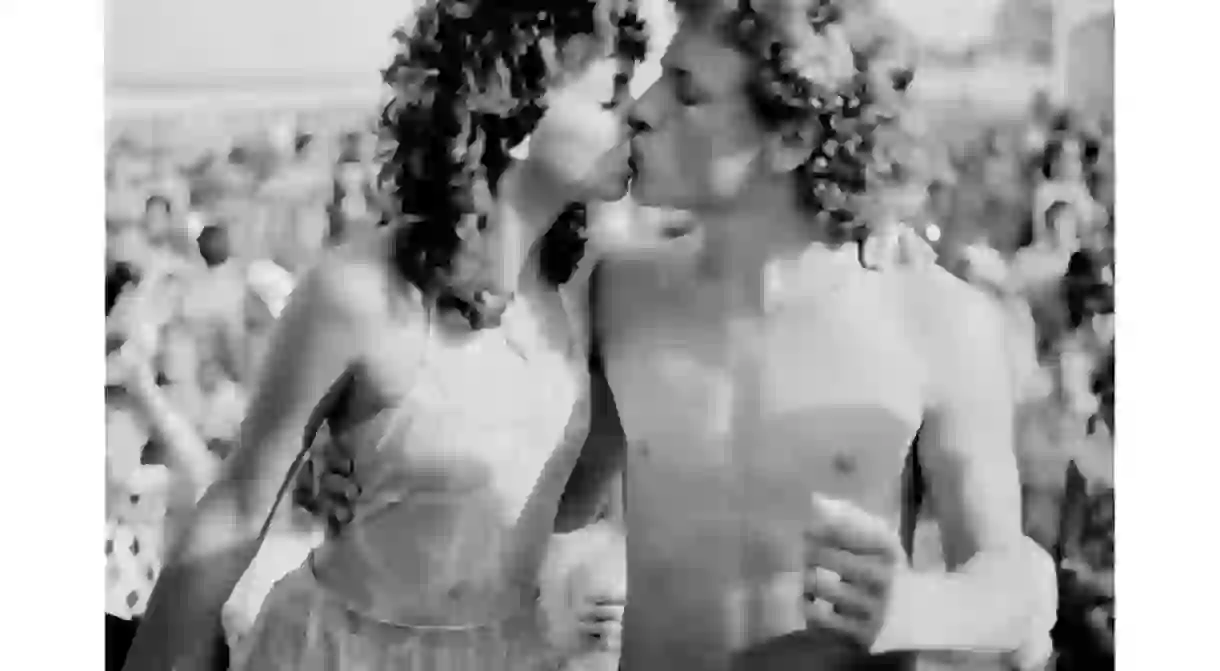The Enduring Legacy of Spring Break Through the Lens of Photographer Keith McManus

Dive into a brief history of spring break in the United States, and witness the cultural phenomenon through the eyes of documentary photographer Keith McManus, who captured spring break in Daytona Beach, Florida, annually from 1982 to 1993.

The wild, substance-doused, fleshy legacy of spring break is legendary in the United States. Its enduring attraction is evident in long-standing pop-culture mythologies, documented in films like 1983’s Spring Break and 2013’s Spring Breakers, as well as raucous television shows, including MTV’s (formerly) annual trip to oceanside locations, where bikini contests were hosted alongside music-video countdowns. Visions of tequila shots and pools packed with hard-bodied revelers are forever a part of American lore, even if the realities of what spring break is, and where it happens, have changed over time.

Though humankind has been celebrating spring with rituals and alcohol for thousands of years (the Greeks and Romans welcomed the rejuvenating season of the god of wine – Dionysus and Bacchus, respectively – way back in ancient times), the concept of spring break as we know it began around 1928, when the first Olympic-size swimming pool was built in Fort Lauderdale, Florida. Top athletes flocked to the gargantuan pool to compete while on break from classes over the next decade, and their less athletically inclined college buddies sometimes followed. Time magazine documented the phenomenon in a 1959 article titled “Beer & the Beach,” and in 1960, Where the Boys Are – a musical film with limbo contests and beach make-outs set in Fort Lauderdale, starring a bronzed George Hamilton – cemented the idea of booze, sun and fun in American psyches. By the ’80s, Fort Lauderdale residents were partied out, and wet-T-shirt-contest-seeking twenty-somethings moved on to terrorize Daytona Beach, Mexico and the Caribbean, among other places. Spring break today generally occurs between the beginning of March and Easter Sunday, providing a neat juxtaposition of young people enjoying excessive indulgence while a solid chunk of the rest of the country is fasting or abstaining for Lent.

Documentary photographer and filmmaker Keith McManus found himself at the center of spring-break madness in Daytona Beach, Florida, back in the ’80s. For 11 years, his artistic curiosity drove him to return to the tropical hotspot to document what he calls a “modern cultural tradition.” “It occurred to me that there really weren’t any rite-of-passage ceremonies that were codified in our culture,” says McManus, whose work often involves years-long projects. McManus’s photos stayed dormant for decades, until he finally published them in a book, Spring Break: Rite of Passage, in 2009.

McManus visited Daytona Beach while he was a professor at Rochester Institute of Technology; he never experienced spring break when he himself was in school. He wandered the popular hotels and beaches with a couple of cameras hanging around his neck – the more obvious he was about what he was doing, the more invisible he felt he became to the partiers around him. “[The spring breakers] came to Daytona for a week with limited budgets, and they barely ate and drank a lot and got a sunburn,” McManus says. “On the surface there was nothing particularly profound about what they did, but it was a thing to witness and watch youth behavior in the 20th century. I don’t know if it was an obsession of mine, but visually as a documentary photographer it was a kind of priceless time in history. And I had good access.”

Culture Trip asked McManus to revisit some of his photographs from that time period and talk about what he really saw through his lens, and the depth of what he captured goes far beyond the good times. “Mostly the kids in these pictures could be grandparents now,” McManus says, “so I often wonder, What the heck happened to all these people? You know, where are they?”


“There’s one photograph from the first year that got me thinking about the idea and sent me back again. It’s a photograph of a bikini contest; there’s a group of young women in bikinis on left, and on right there’s an empty stage. That photo I always felt was symbolic of the way women are treated. All the events were, if it was about women it was how women looked, and if it was about men it was what they were able to do. There was that dividing line between the two sexes, about how they behaved, and what they were expected to do and perform.” –Keith McManus | © Keith McManus





To celebrate the arrival of spring, Culture Trip explores themes of revolution, rebirth and renewal across the world.













